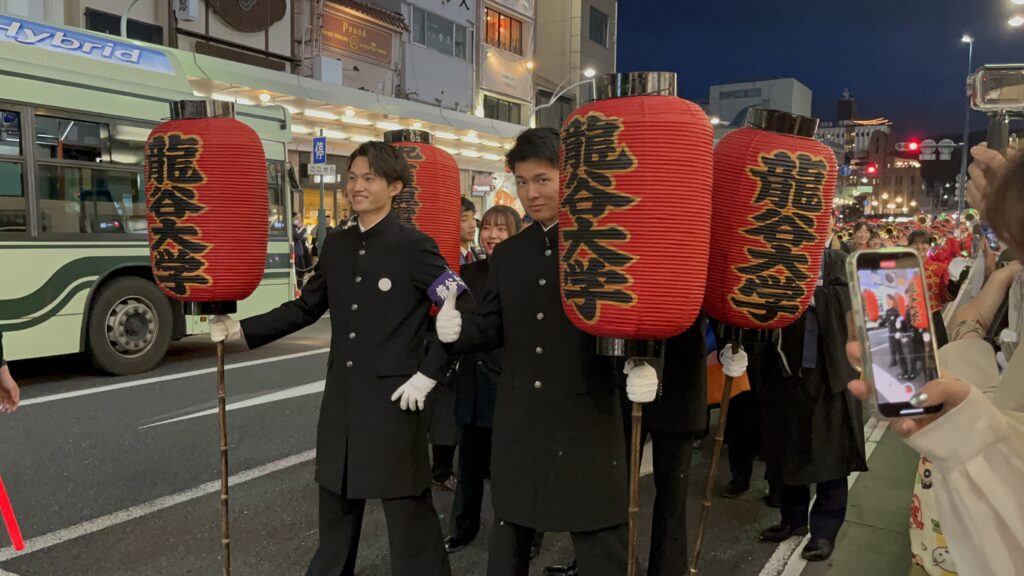
Ryukoku University celebrates its anniversary of establishment on May 21, also the day of the birth of Shinran Shonin1. Since 1922, the year Ryukoku University was authorized as a university, students have hosted the “Ryukoku University Founding Commemoration and Nativity Ceremony” every year, with this year marking the 103rd event of its kind. One of the events, the lantern procession, has been a traditional event since 1976, but was forced into cancellation after 2020 due to the COVID-19 pandemic. Now, after a five-year hiatus, the lantern procession has returned, and I traveled to Shijo-Kawaramachi to admire the big event.
The “Shinran Shonin Nativity” lantern procession pays homage to Shinran Shonin and demonstrates the culture and spirit of Jōdo Shinshū (a school of Pure Land Buddhism founded by the former Tendai Japanese monk Shinran). Ryukoku University faculty and students carry lanterns in their hands as they make their way from Maruyama Park Music Hall, through Gion and Shijo Kawaramachi, until they finally arrive at Kawaramachi Oike. The performance by the Ryukoku University concert band was both awe-inspiring and embellished, adding a touch of glamour to the procession and making the night in Kyoto even more colorful.
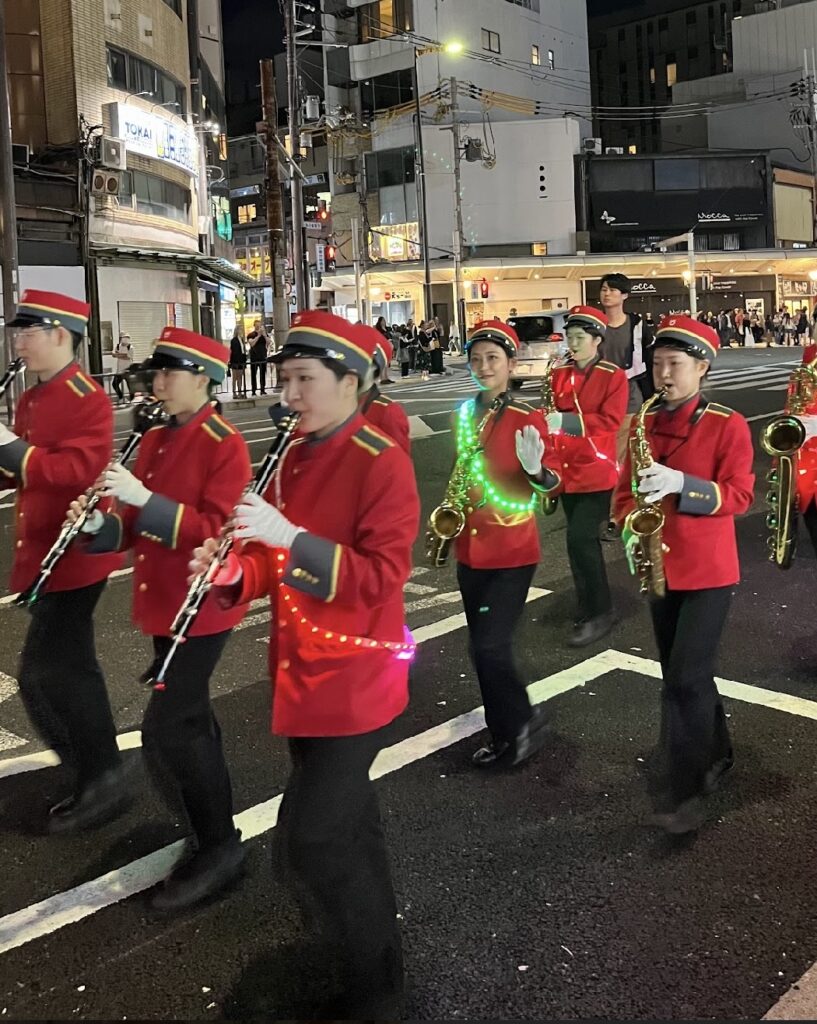
I believe that concert band occupies a unique and important position in Japanese schools. It is an important discipline not only for students to showcase their musical prowess, but also to foster teamwork, cultivate perseverance, and boost self-confidence. Whether it be junior high school, high school, or university, concert bands are an integral part of school culture, attracting many students who love music.
A concert band consists of woodwind, brass, and percussion instruments, including flute, clarinet, saxophone, trumpet, trombone, tuba, timpani, and many others.
“Hibike! Euphonium2” has become popular overseas while foreign interest in Japanese concert bands themselves has also increased. As for this lantern procession, it seems that it has given visitors to Kyoto a taste of the vibrant Japanese campus life.
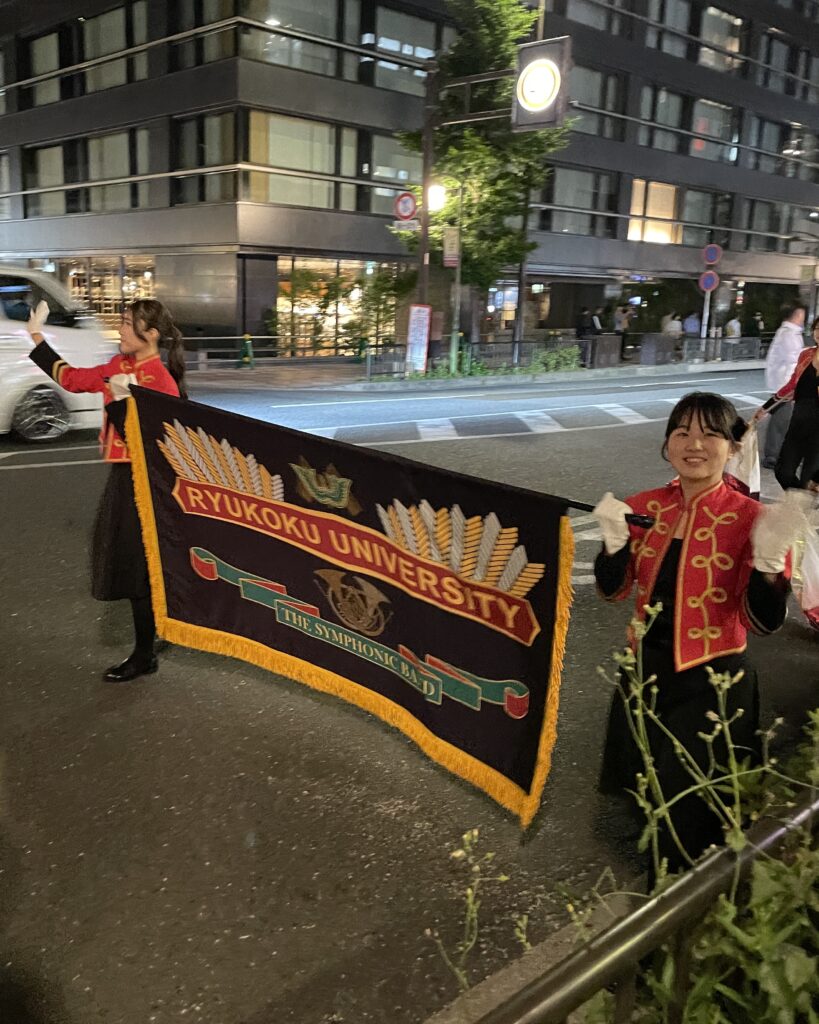
The most striking feature of the procession is the five-color flag, located in the third row of the procession. The flag bearers are dressed in simple monk’s robes and hold prayer beads in their hands, a sharp contrast to the uniforms of the boy’s school uniform and concert band attire. This five-color flag is the international Buddhist flag. Composed of blue, yellow, red, white, and orange, these five colors represent the five kinds of wisdom in Buddhism. It has been widely used since the 1950s and is an international symbol of Buddhist faith and unity.
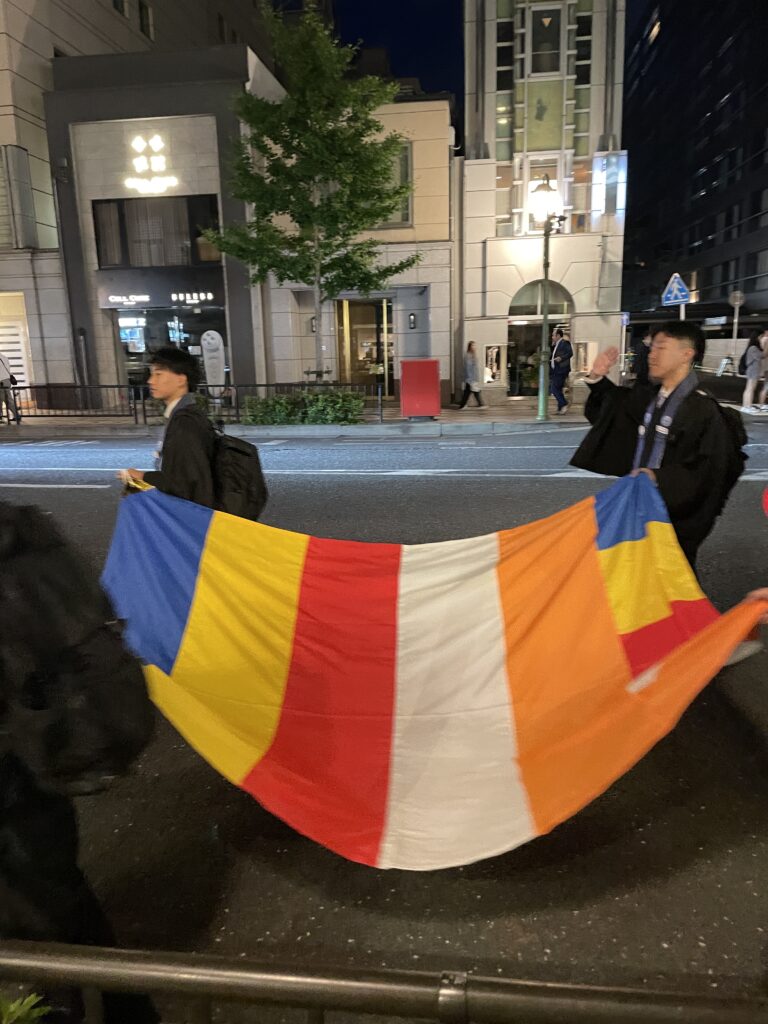
In addition to the lantern procession, “Café Ryukoku &” at Ryukoku University on the 1st floor of the Seijokan will offer a commemorative menu item, “Tan-e-soba Set Meal (たんえそば定食)3,” from early to mid May. The set meal includes soy milk soba, an onigiri (rice ball), and dessert, and is priced at 600 yen. The soy milk soba was refreshing, and the aroma of soy milk and sesame combined superbly, making it even tastier than I had imagined.
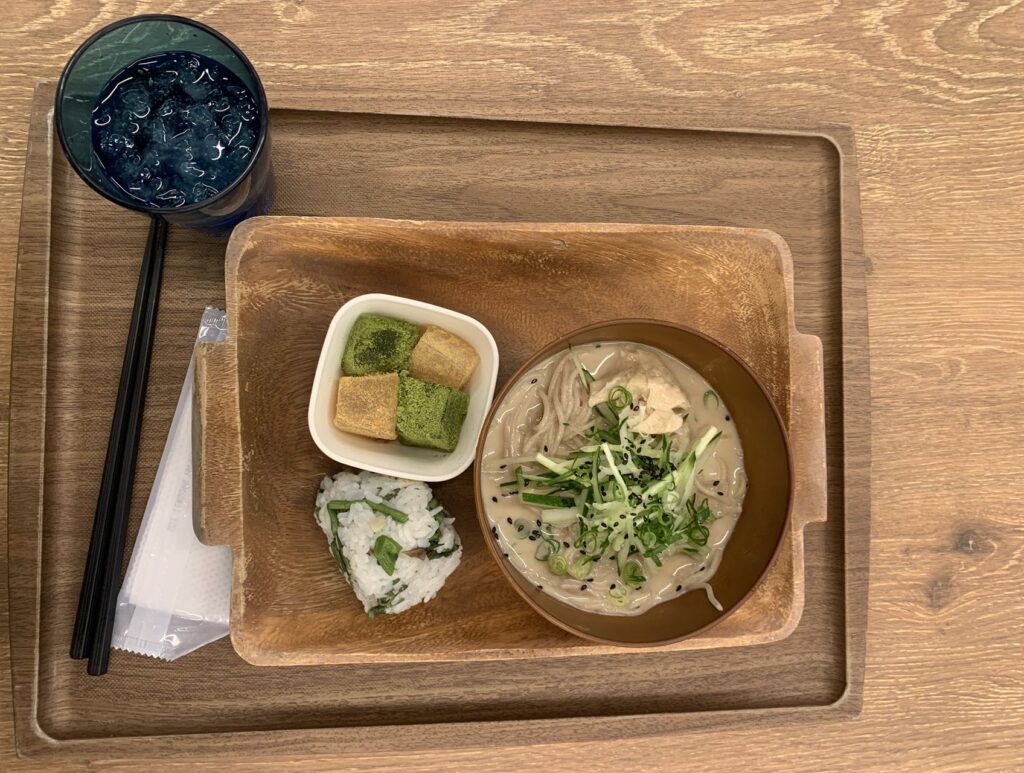
There is an anecdote about Shinran Shonin related to soba (buckwheat noodles).
When Shinran was still a trainee monk on Mt. Hiei, he would often sneak down the mountain in the middle of the night and continue his training alone. This turned into a rumor, so one night the head monk gathered everyone unannounced in the Buddhist temple and took a roll call. At the time, Shinran’s name was “Han-nen,” and when the head monk called out, “Han-nen!,” he was so relieved to hear a reply that he served soba (buckwheat noodles) to his disciples for the evening meal. The next morning, however, the disciples found Han-nen returning from his midnight training. When the surprised disciples returned to the place where they had eaten soba last night, they found a wooden statue of Han-nen. The wooden statue had a green onion in its mouth! It was a wooden statue made by Han-nen that had answered for him and eaten the soba the night before. Since then, the wooden statue has come to be known as the “Soba-Eating Wooden Statue.”
From this anecdote, soba has turned into something eaten on the anniversary of Shinran Shonin’s death.
Ryukoku University’s “Café Ryukoku &” is open to the public and does not require a student ID; if you have a chance to stop by Ryukoku University’s Fukakusa campus in May, be sure to try it for yourself!
- Shinran Shonin (1173-1263): A monk of the Kamakura Era and founder of “Jodo Shinshu” (also known as Shin Buddhism or True Pure Land Buddhism). He was the first monk in Japanese history to openly eat meat and marry a wife. He advocated for altruism and the righteousness of the wicked. ↩︎
- “Hibike! Euphonium” (More commonly known in English as: “Sound! Euphonium”): A Japanese novel by Ayano Takeda which, after being made into a manga, was adapted into an animated television series by Kyoto Animation. ↩︎
- This meal actually began as an idea from a student which was then adopted by the café and turned into a special item. ↩︎
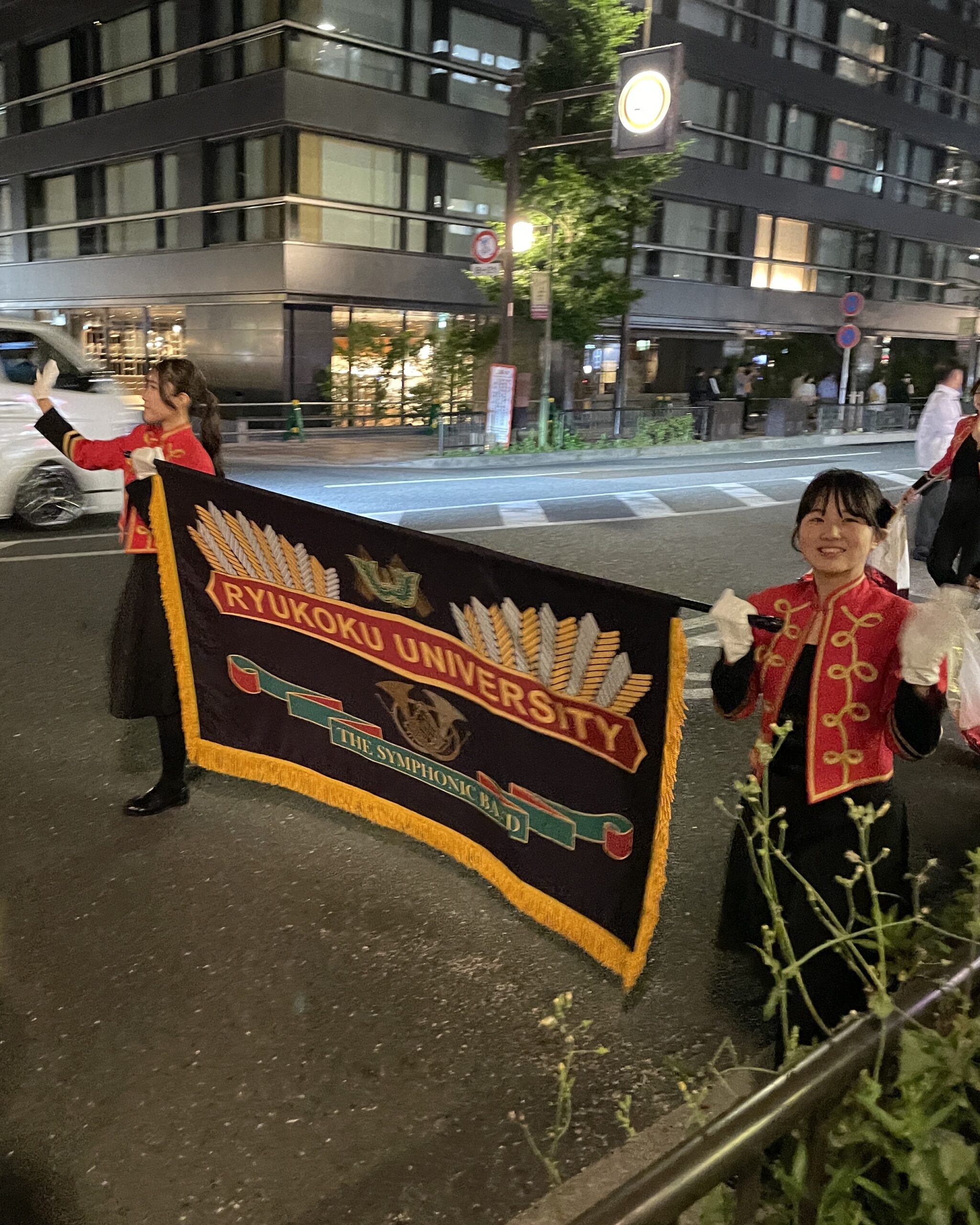


コメント